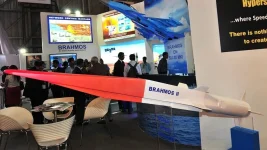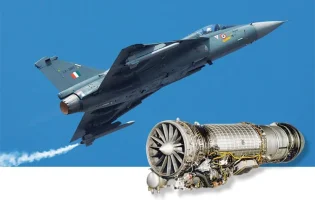Recent analysis following a reported military exchange in May 2025 has highlighted significant vulnerabilities in Pakistan's air defence network.
According to reports from Pakistani defence analysis platform Quwa, older variants of India's BrahMos cruise missile successfully penetrated deep into Pakistani airspace during a mission dubbed "Operation Sindoor," raising alarms about the effectiveness of Pakistan's current defensive capabilities.
In the reported conflict, India is said to have launched fifteen BrahMos missiles from its older Block-I and Block-II stockpiles. Despite being older versions, these missiles successfully struck high-value targets, including the Nur Khan, Rafiqui, and Sargodha airbases.
The success of these strikes has reportedly caused considerable concern in Islamabad, prompting a re-evaluation of its air defence strategy against India's growing missile arsenal.
The incident exposed critical gaps in Pakistan's air defences, which include Chinese-made HQ-9 systems. Defence analysts suggest that the BrahMos missiles, known for their supersonic speeds and low-altitude flight paths, were able to overwhelm radar detection and interception systems.
The strikes resulted in an estimated $7 billion in equipment losses for Pakistan, including J-17 Thunder and J-10C fighter jets, dealing a severe blow to its operational and economic stability.
The BrahMos, a joint venture between India's Defence Research and Development Organisation (DRDO) and Russia's NPO Mashinostroyeniya, has been systematically upgraded over the years.
The initial Block-I variant was introduced around 2005, followed by a more precise Block-II version in 2010. Later, the Block-III model offered an extended range and superior terrain-hugging flight.
The fact that India achieved its objectives using the older Block-I and II missiles suggests a deliberate strategy, possibly to test Pakistan’s defences without revealing its most advanced capabilities.
Even greater concerns for Pakistan's military planners are centered on the next generation of this weapon. India is actively developing the BrahMos Block-IV, which is expected to be equipped with a sophisticated indigenous Active Electronically Scanned Array (AESA) seeker.
This advanced technology provides superior targeting precision and is highly resistant to electronic jamming, a key feature of modern warfare. This could render many existing countermeasure systems obsolete.
While unconfirmed, reports suggest the Block-IV could have its range extended to 800 km, placing almost all of Pakistan's strategic assets within reach.
The successful use of older missiles has placed Pakistan in a difficult strategic position. The nation faces an urgent need to invest in more advanced air defence systems to counter the evolving threat.
However, this comes at a time of immense economic strain, with the country managing approximately $128 billion in external debt.
The significant financial losses from the May conflict further strain a national budget already dependent on international bailouts, making costly military upgrades a formidable challenge.








